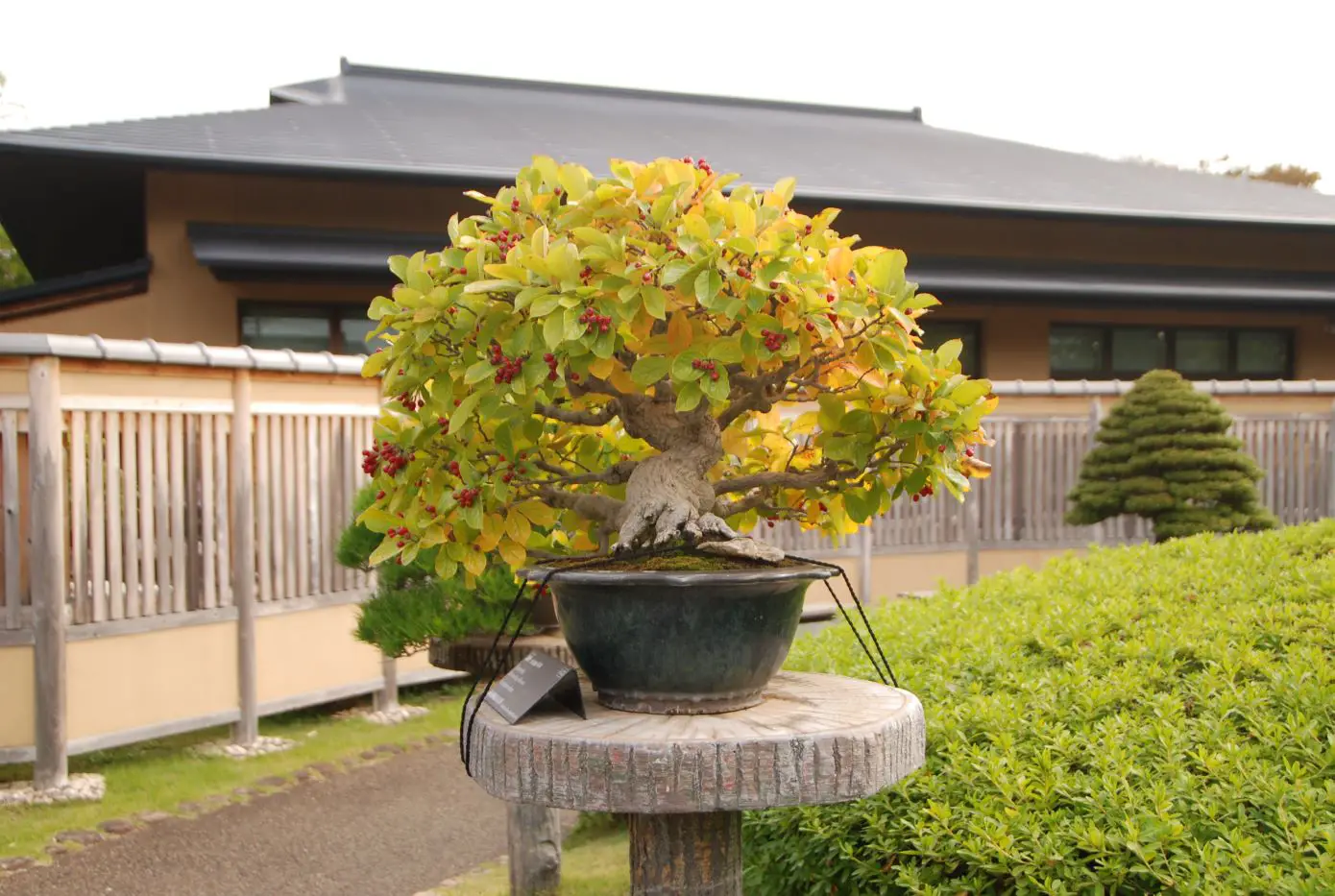Understanding fall fertilization for bonsai trees
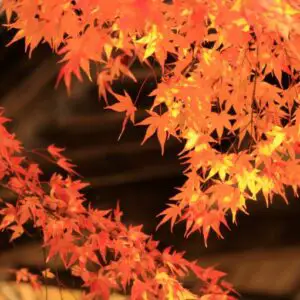
Japanese maple in orange
Should you fertilize bonsai in the fall?
Fall fertilization is necessary for bonsai trees to promote root development, preserve energy for winter resilience, and enhance spring flush. In the fall, root absorption of nutrients is actually very efficient and remains so until soil temperatures approach freezing.
Let me explain why bonsai fall fertilization is important.
Promote root development
Fall is a critical period for root development in bonsai trees. Though roots grow the most in spring, they start to regrow when the temperature cools down in the fall and continue to extend even as the above-ground growth almost stops in preparation for winter.
The minimum temperature for root growth depends on the species of the trees but in general, roots will continue to grow as long as soil temperature is above about 40°F (5°C).
Store energy for winter
Bonsai trees that receive appropriate nutrients in the fall are better equipped to withstand the harsh conditions of winter including cold temperatures, frost, and potential dehydration.
Fertilizers contribute to the availability of nutrients in the soil, ensuring that the tree has an ample supply for metabolic processes. The absorbed nutrients then contribute to the synthesis of proteins, enzymes, and other essential compounds that are involved in energy storage.
Enhance spring flush
Nitrogen that is absorbed in fall will be stored and converted to forms used to support the spring flush of growth. This strategic storage and conversion of energy contribute to vigorous and healthy growth, promoting a robust start to the growing season.
What happens if you skip fall fertilization?
Fall fertilization is a crucial aspect of bonsai care and the decision to skip this seasonal practice can have significant repercussions for the health and vitality of your bonsai trees as follows.
Weakened winter resilience
One of the primary purposes of fall fertilization is to fortify your bonsai for the challenges of winter. Skipping this step can result in weakened roots, foliage, and overall resilience. The tree may be more susceptible to winter stressors, including freezing temperatures and harsh winds.
Delayed spring growth
Fall fertilization not only prepares the bonsai for this winter but also influences its performance in the following spring. Without the necessary nutrients stored during the fall, your bonsai may experience delayed or weakened spring growth, impacting its overall vigor.
Possible long-term health decline
The consequences of skipping fall fertilization may not be immediately apparent but can accumulate over time. It can lead to a gradual decline in the overall health and vitality of your bonsai. Regular, seasonally appropriate care is crucial for the long-term well-being of your trees.
Best bonsai fertilizer for fall application
Selecting the appropriate fertilizer for your bonsai trees during the fall is a pivotal decision that can significantly impact their health and resilience. In this section, I will guide you through the considerations when choosing the right fertilizer for your bonsai during the autumn season.
Lower nitrogen content
Less leafy growth

Autumn calls for a different approach to fertilization for bonsai trees.
One of the key factors in choosing bonsai fertilization for fall application is lower nitrogen content than in the growing season.
Nitrogen is the element that promotes green leafy growth and is a big part of making proteins, which are a vital part of all living creatures, including bonsai trees. This is why emphasizing nitrogen content during the growing season is beneficial.
But when the fall comes, opting for a fertilizer with reduced nitrogen content helps signal to the tree that it’s time to slow down the growth and prepare for the winter. Applying nitrogen-rich fertilizer may stimulate further foliage growth when trees should direct energy for winter preparation for both coniferous and deciduous trees.
For a comprehensive guide to bonsai fertilization, the following post might be helpful.
Autumn coloration
Nitrogen-rich fertilizers can also negatively affect the vibrant autumn coloration of deciduous bonsai trees.
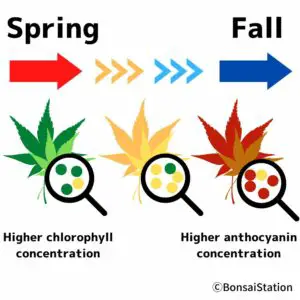
Leaf color change
The key factor in autumn leaf color change is the breakdown of chlorophyll, the green pigment responsible for photosynthesis. When deciduous trees’ foliage continues to grow due to excess nitrogen, the breakdown of chlorophyll that is otherwise fading is delayed. As a result, the green color persists in the leaves for a longer duration.
A shift to a balanced or low-nitrogen fertilizer in late summer or early fall can help promote the natural processes leading to vibrant autumn hues.
If you are interested in how leaf color change happens, please check the following post.
Emphasis on phosphorus and potassium
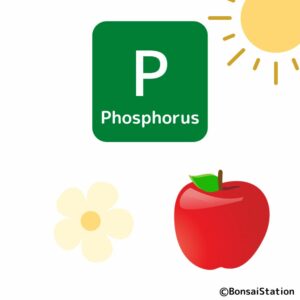
Increasing phosphorus levels in fall fertilizers helps trees store energy in the roots. It also supports root development and strengthens the tree’s overall structure.
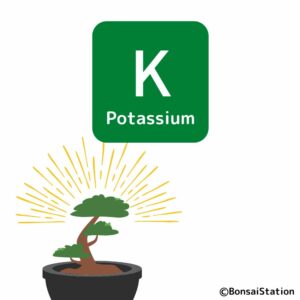
Increasing the potassium content in fertilizer can also contribute to enhancing the cold hardiness of trees. Potassium strengthens cell walls which helps cells resist damage caused by freezing temperatures. The enhanced structural and physiological characteristics resulting from potassium availability contribute to the overall cold hardiness of the tree.
The best fall bonsai fertilizer
Balanced
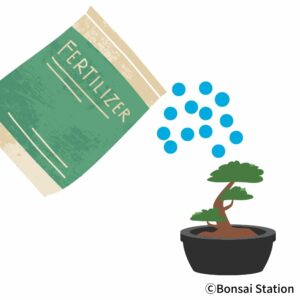
In light of lower nitrogen content with an emphasis on phosphorous and potassium, balanced fertilizers, with (mostly) equal ratios of nitrogen, phosphorus, and potassium, are best suited for fall application.
Fast-acting
Also, liquid or fast-acting fertilizer is better as nutrients shouldn’t remain in the soil in winter when trees are dormant or quasi-dormant.
Dyna-Gro Bonsai-Pro Liquid Fertilizer
This product contains more or less balanced nitrogen, phosphorus, and potassium that is suitable for all bonsai trees (NPK ratio- 7:9:5). It helps maintain overall tree health without encouraging excessive growth, which is particularly beneficial as bonsai trees prepare for dormancy.
It is liquid, fast-acting and more easily absorbed by trees. The effect wears off quickly and the nutrients will not remain in the soil for long.
You should avoid slow-release fertilizers that deliver nutrients beyond fall. The steady supply of nutrients can be advantageous during fall but not in winter. The effects of many popular commercial products can last over 6 months, which is way too long for fall application.
Make sure to check the label and see if the effects wear off before the fall ends.
Tips for fall fertilization
Successfully navigating fall fertilization for your bonsai involves more than just choosing the right fertilizer. In this section, I’ll explore practical tips to ensure effective and mindful application during the autumn season.
When to start fertilizing in the fall
The decision to start fall fertilization for bonsai trees can depend on both temperature and your trees. Here are some guidelines.
Temperature range
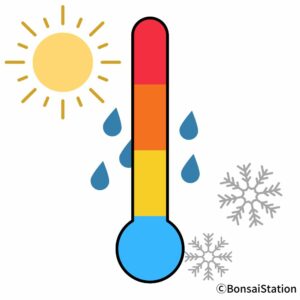
In general, you should begin fall fertilization when the temperatures start to cool down to around 86°F (30°C). As you can imagine, this is a very general guideline and the specific temperature range can vary based on the species of bonsai and the individual trees.
Observe tree behavior
Pay attention to the behavior of your bonsai trees. If you notice a slowdown in growth, a change in leaf color such as vibrant green to shady green, or other signs of preparation for dormancy like swelling of buds, it is an indication that you should start fall fertilization.
Adapt to tree species
Observing and identifying the specific needs of your tree species is essential. Different bonsai species have different responses to fall conditions. Some may continue active growth for a longer period, while others may start preparing for dormancy earlier.
Remember that these are general guidelines, and it’s crucial to observe the behavior of your individual bonsai and adapt your fertilization schedule accordingly.
When to stop fertilizing in the fall
The timing for stopping fertilization in the fall depends on various factors, including the specific bonsai species, local climate, and the onset of dormancy. Here are general guidelines to help you determine when to stop fertilizing in the fall.
Transition to dormancy
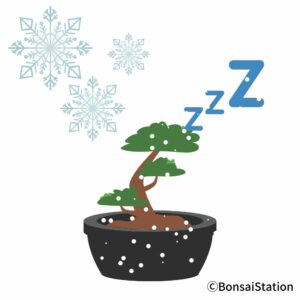
As bonsai trees transition into dormancy, their metabolic processes slow down. One of the primary signs is a noticeable reduction in new growth. Other indications include leaf color changes to brown, stiffness in needles, branch rigidity, and less water uptake.
When you notice these signs, you should gradually reduce fertilization as the tree enters the dormant phase.
Avoid late fall applications
Avoid applying fertilizer too late into the fall, especially in regions with harsh winters. Late fertilization may stimulate new growth that won’t have sufficient time to harden before winter, making the tree more vulnerable to cold damage.
When to avoid fertilizing
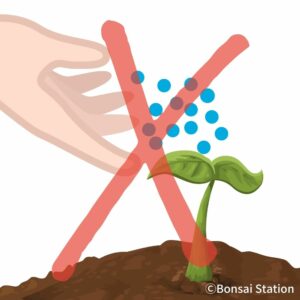
While fall fertilization is generally beneficial for many bonsai trees, there are situations and conditions where it’s advisable to avoid or modify the practice. Here are scenarios in which you might want to reconsider fall fertilization:
- Expecting autumn color change
- Newly repotted
- Poor drainage
- Unhealthy or stressed
Autumn color change
For deciduous trees that you want to enjoy beautiful autumn colors, it is recommended to avoid nitrogen-rich fertilizers or reduce fertilization altogether until leaves start to change color. These trees are naturally preparing for color change and introducing nutrients at this stage is not beneficial.
Newly repotted trees
Though fall is not the best time to repot, you might decide to do so. Fertilizing too soon after repotting may interfere with the recovery process. Trees that have been recently repotted may need time to establish their root systems.
Poor drainage
If your bonsai is in a poorly-draining soil mix or root-bound, late fall fertilization can lead to waterlogged conditions. Your trees may not be able to absorb the nutrients you apply under this condition.
Unhealthy or stressed trees
If your bonsai is already stressed or unhealthy, it’s often better to address the underlying issues before applying fertilizer. Fertilizing stressed trees can sometimes exacerbate problems.
Always consider the specific needs of your bonsai, the local climate, and the tree’s current condition when deciding on fall fertilization. If in doubt, it’s often better for your trees to start slow or with reduced application.

